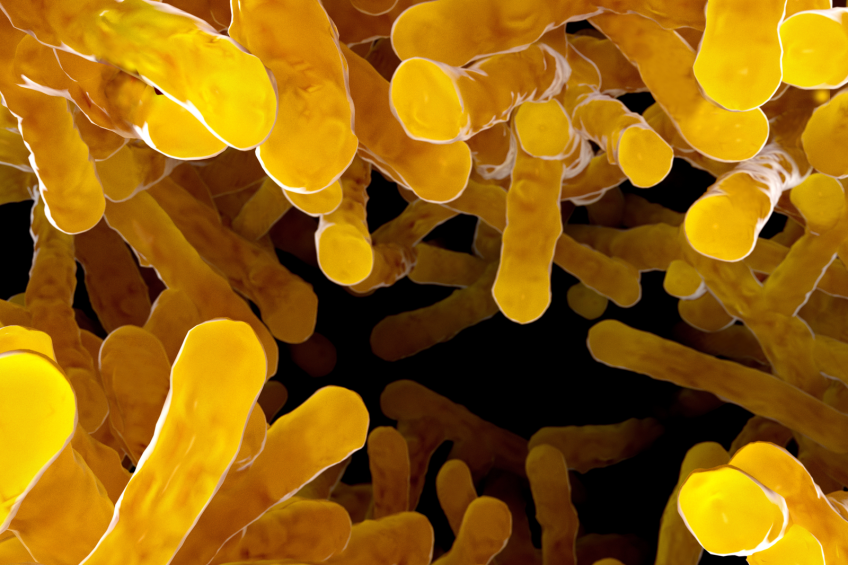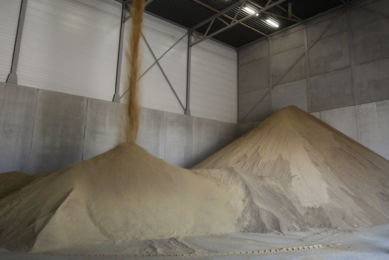Enhancing the microbial population within poultry

Within man, animals, and poultry a very diverse population of microorganisms live in a fierce competitive environment: the gut. While fungi, protozoa, and viruses are important components of the microbial ecosystem, bacteria comprise the largest and best-understood portion of this ecosystem.
The gastrointestinal tract is one of the most diverse and dense microbial environments known. More than 10,000 bacteria species are found in the gut. This microbial population lives in a symbiotic (mutually beneficial) relationship with the host, which evolved over millions of years to benefit the host and the microbial population. This means that the typical microbial population of the gut is not ‘tuned’ to ensure maximum production efficiency, animal health, or food safety. For example, approximately 10% of the energy used by poultry comes from the fermentation of feedstuffs by intestinal bacteria. The process of fermentation is inherently energetically inefficient because it occurs in the absence of oxygen, but the anaerobic conditions of the gut allow the bacteria to break down a wide variety of feedstuffs.
In recent years, there has been an explosion of information about the microbial population of the gut, and much research has focused on the power of the ‘microbiome’. Studies across species have found that altering the composition of the microbial ecosystem can profoundly alter the host animal’s physiology, such as the level of obesity. The ratio of the bacterial phyla (large groups of species) Firmicutes:Bacteroidetes in the intestinal tract of mice were correlated to the development of obesity. Other researchers have found that mice that were raised ‘germ-free’ could be fed 30% more calories than conventional mice and would not become obese; but if the microbial population was transplanted in the germ-free mice, they would become obese. Studies in humans have found that there are certain bacterial groups (including Roseburia and Eubacterium) that are related with increased obesity, and thus increased ‘feed efficiency’. While some of the data between host animals varies or is contradictory, it generally appears that the more Firmicutes relative to Bacteroidetes relates to more obesity or increased feed efficiency. Collectively these data offer an insight into the powerful opportunity that “if we can get the microbial balance just right” then we can improve growth performance and production efficiency of food animals.
Altering the microbial composition in poultry
The poultry industry offers an exciting opportunity to alter the microbial composition of chicks as they begin their growth. As birds mature, the microbial population of their gut changes dramatically. At the time of hatch, the chick gut is essentially sterile, but is quickly colonised by bacteria from the hen, the eggshell, and/or hatching environment. The microbial population increases rapidly in density and increases in composition diversity, with a shift of the population to more lactic acid-producing bacteria (typically the bacterial group Firmicutes), which rapidly ferment the dietary components fed to poultry. Other studies have found that an increased microbial diversity and density in the gut make birds more resistant to colonisation by animal pathogens and foodborne pathogenic bacteria, such as Salmonella, that can affect subsequent human consumers.
To harness the power of the microbial population, we have focused on non-antibiotic methods of improving growth performance, animal health, and food safety. One of the most common methods has been using dietary alternatives. Diet can change the microbial population simply by providing different substances for the bacteria to ferment (e.g., starch versus fibre), which alters the selective advantage for some bacterial groups. The end-products of fermentation are most commonly volatile fatty acids (VFA) that are absorbed by the host and provide energy for host growth. VFA’s also provide energy for intestinal cell growth, which can lead to increased nutrient absorptive capacity in the gut. Increased VFA levels can lead to an increased energy balance of the host animal, and subsequent fat reserves deposits when energy is in excess of animal needs. Unfortunately, dietary changes are a broad method to alter the microbial population, and cannot target specific bacteria to target or enhance, thus more targeted and tailored approaches are necessary.

Current interest in probiotics
Probiotic approaches (including competitive exclusion, probiotic products, and prebiotics) have had a recent resurgence in interest. Probiotics used in animals are known as direct-fed microbials (DFM) and are typically bacteria or fungal cultures and can be live or dead cultures, and may include fermentation end products. The goal of probiotics is to provide a bacterial population that will enhance growth efficiency or animal health. When used in newly hatched chicks this approach is called ‘competitive exclusion’ and it is often used to improve gain and energy status after hatching. It is also to exclude pathogenic bacteria from colonising the gut. This has been shown to be effective in reducing pathogenic bacterial loads by jump starting the microbial population succession to more rapidly reach a diverse and dense microbial ecosystem that can improve growth performance. Prebiotics are an interesting special case of both a dietary intervention and a probiotic approach. Prebiotics are substrates that the host cannot digest but that bacteria can ferment, such as oligosaccharides. These compounds are fermented by specific members of the microbial population, effectively giving them a targeted ‘snack’ that can provide them an advantage in the fierce competition within the gut.
Recent research advances have led to an explosion in information on the composition and the impact of the microbiome on health and productivity that is nothing short of revolutionary. The accelerating rate of discoveries is dizzying and we see in a way that we never could before the importance of the microbial population of the gut, and how profoundly that impacts host animal well-being and productivity. The fact that the microbiome is so inextricably linked with host growth and energy status, indicates a bright promise for improving poultry growth efficiency by manipulating the microbial population through diet and probiotic approaches. By using what we have learned from the ecology of the larger world, we can manipulate the micro-inhabitants to positively enhance their environment (the bird) while improving production efficiency.











